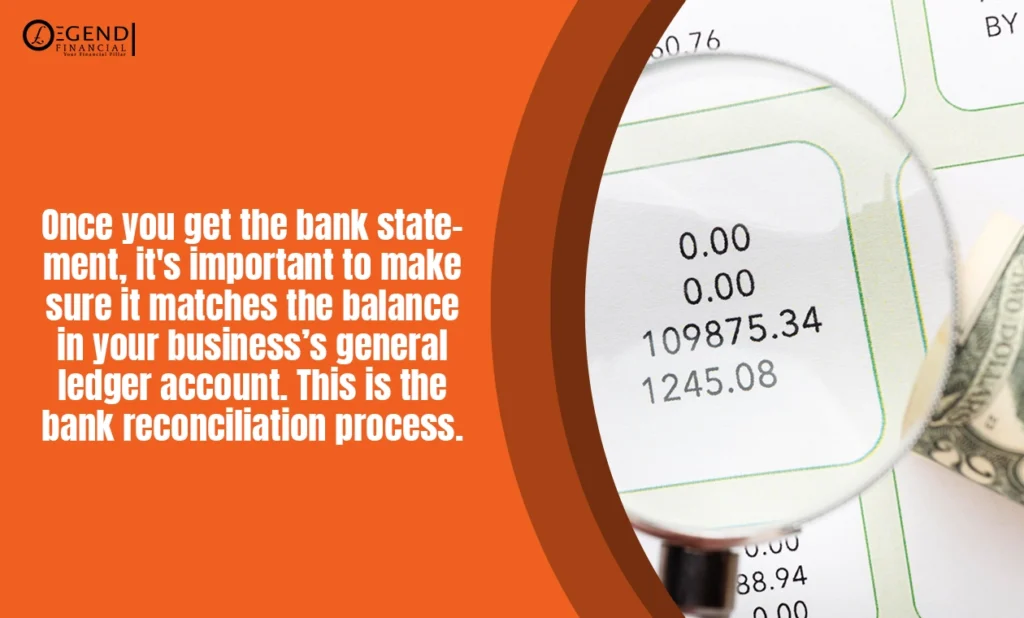Contents
The bank reconciliation statement is an important document that compares an organisation’s financial records with its bank statement. The purpose of this document is to make sure that proper financial records are maintained, and errors or unauthorised transactions are detected.
In this article, we will address some of your most common bank reconciliation statement questions and answers, break down the process step-by-step, and share tips to make it easier for you.
What is a Bank Reconciliation Statement?
It is a financial document used to compare an organisation’s cash book with its bank statement. This process helps identify and resolve discrepancies caused by timing differences, errors, or unrecorded transactions. When both records match, businesses can maintain accurate financial records and avoid issues such as incorrect cash flow reporting or unauthorised transactions.
Bank reconciliation can be done manually or with accounting software like Xero. It ensures accurate recording of debits and credits, supports double-entry bookkeeping, and provides a reliable statement of financial position.

Who Makes a Reconciliation Statement?
A bank reconciliation statement is prepared by individuals or professionals responsible for maintaining financial records. These include:
- Bookkeepers and Accountants
- Business Owners
- Finance Teams
- Third-Party Services
What Do You Include in a Reconciliation Statement?
Before preparing a reconciliation statement, careful attention must be given to the following criteria:
1. Opening Balance: The starting balance from your bank statement and cash book.
2. List of Transactions: All deposits, withdrawals, cheques issued, and direct debits processed during the reconciliation period.
3. Adjustments
- Outstanding Cheques: Payments made but not yet cleared by the bank.
- Deposits in Transit: Deposits recorded in the cash book but not yet reflected in the bank statement.
- Bank Charges and Fees: Any charges applied by the bank.
- Unrecorded Transactions: Transactions that are in the bank statement but not yet recorded in the cash book.
4. Closing Balance: The final reconciled balance after adjustments, to make sure both records align.
Why is Bank Reconciliation Important?
Keeping your business finances in order can sometimes feel like a juggling act. Between tracking transactions, managing payments, and ensuring cash flow, it is easy for discrepancies to creep in. This is where a bank reconciliation statement becomes an indispensable tool for your financial toolkit.
Without regular reconciliation, it is easier for errors or even fraudulent activities to go unnoticed. By checking for discrepancies, you can quickly identify issues like missing payments, overcharges, or suspicious transactions, protecting your business from financial risks.
Effective cash flow management is another key benefit. Regular reconciliation helps you avoid becoming overdrawn, ensuring enough funds are available for expenses
On the other hand, incorrectly reconciling your bank statement can lead to:
- Poor decision-making
- Increased fraud risk
- Legal and regulatory issues
- Loss of stakeholder confidence
What is the Bank Reconciliation Formula?
A simple formula for bank reconciliation is:
Adjusted Cash Book Balance = Bank Statement Balance + Deposits in Transit – Outstanding Cheques
Let us break down each component:
- Adjusted Cash Book Balance: This is the corrected balance in your cash book after accounting for any discrepancies with the bank statement. It reflects all transactions that have been recorded in your books but not yet processed by the bank.
- Bank Statement Balance: The balance shown on your bank statement, which reflects transactions the bank has recorded.
- Deposits in Transit: These are deposits made by your business that the bank has not yet processed, meaning they are in transit between your company and the bank.
- Outstanding Cheques: These are cheques issued by your business that the bank has not yet cleared, often due to delays in processing.
Practical Example:
- Bank Statement Balance: £5,000
- Deposits in Transit: £1,500
- Outstanding Cheques: £700
The Adjusted Cash Book Balance would be:
£5,000 + £1,500 – £700 = £5,800
This is the accurate balance you should show in your cash book after reconciliation.
What are the Main Types of Discrepancies in a Bank Reconciliation?
Here are the 5 main types of discrepancies you might encounter during the reconciliation process:
1. Outstanding Cheques
These are cheques issued by your business but not yet processed by the bank. Since the bank has not cleared them, the amounts will not appear on the bank statement but should be recorded in your cash book.
2. Deposits in Transit
A deposit in transit occurs when money is deposited into your account but has not yet been recorded by the bank. This could be a cheque or cash deposit made near the end of a banking period.
3. Bank Fees and Charges
Sometimes, the bank applies fees or charges, such as transaction fees, overdraft charges, or interest payments, that may not yet be recorded in your cash book. These can create discrepancies between your bank statement and the cash book.
4. Direct Debits or Standing Orders
Payments made automatically by your bank, like direct debits or standing orders, may not always be recorded in your cash book immediately, causing a mismatch between the two records.
5. Errors in Accounting or Bank Records
Mistakes in either the bank’s records or your own accounting entries can lead to discrepancies. These errors can include duplicated transactions, incorrect amounts, or missed entries.
What is the Bank Reconciliation Process?
Here is a step-by-step guide to help you reconcile your bank statement with your cash book:
1. Gather Documents
Start by gathering all necessary documents, including your bank statement and your ledger or cash book. You will need both to compare the recorded transactions.
2. Compare Opening Balances
Check that the opening balances on your bank statement and cash book match. Any discrepancies should be investigated and resolved before moving forward.
3. Identify Unmatched Transactions
Go through both records, transaction by transaction, and identify any transactions that do not match. Look for differences in amounts, dates, or missing entries such as deposits or payments.
4. Record Adjustments
Once you have identified unmatched transactions, make necessary adjustments to your records. This may include:
a. Bank fees not yet recorded in the cash book
b. Direct debits or standing orders that have been processed by the bank but not yet reflected in the ledger
c. Outstanding cheques or deposits in transit that have not been recorded by the bank yet
5. Reconcile the Final Balance
After making all adjustments, reconcile the final balance in your cash book to match the adjusted bank statement balance. This is your adjusted cash book balance, which should reflect your true available balance.
6. Tools for Easier Reconciliation
To streamline the process, you can use accounting software like QuickBooks or Xero. These tools automatically import bank transactions, match them with your records, and provide detailed reports
Best Practices for Bank Reconciliation
- Consistency is key
Establish a routine for reconciling your bank statements. A larger company may need a bank reconciliation daily or weekly, but a small business may only need to complete it monthly.
- Use Automated Accounting Software
Simplify the process by using accounting software like QuickBooks, Xero, or other automated tools. These platforms reduce the risk of manual errors, making the reconciliation process faster and more accurate.
- Double-check High-Value Transactions
Pay extra attention to high-value transactions such as large payments, deposits, or transfers. Verifying them can help prevent major discrepancies.
- Maintain Clear Records for Auditing
Always keep clear and detailed records of your transactions. Proper documentation ensures that you can easily track any issues, provide evidence if needed, and maintain compliance during audits.
Simplify Your Reconciliation with Expert Support
Maintaining accurate financial records through bank reconciliation statement can be time-consuming and complex, especially as your business grows. With Legend Financial, you get professional cash flow management services to ensure your financial records are always accurate, compliant, and ready for audits.
Contact us today and we can streamline your bank reconciliation and help your business thrive.











